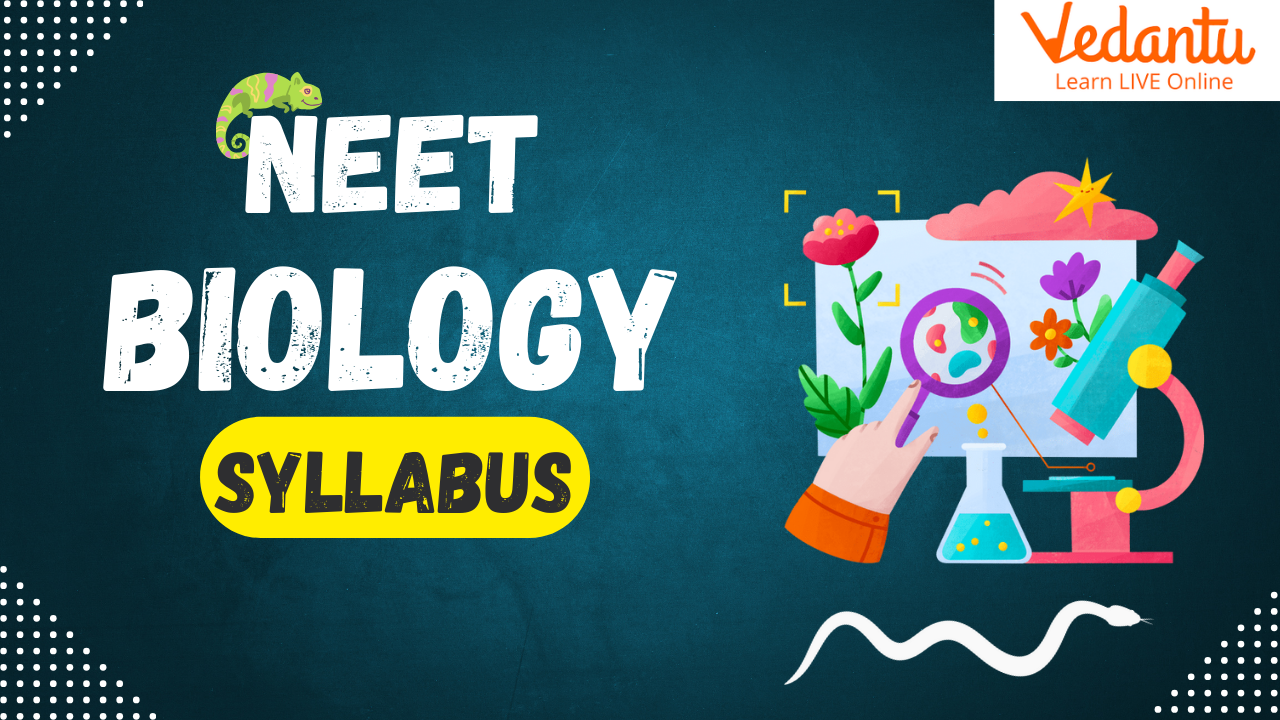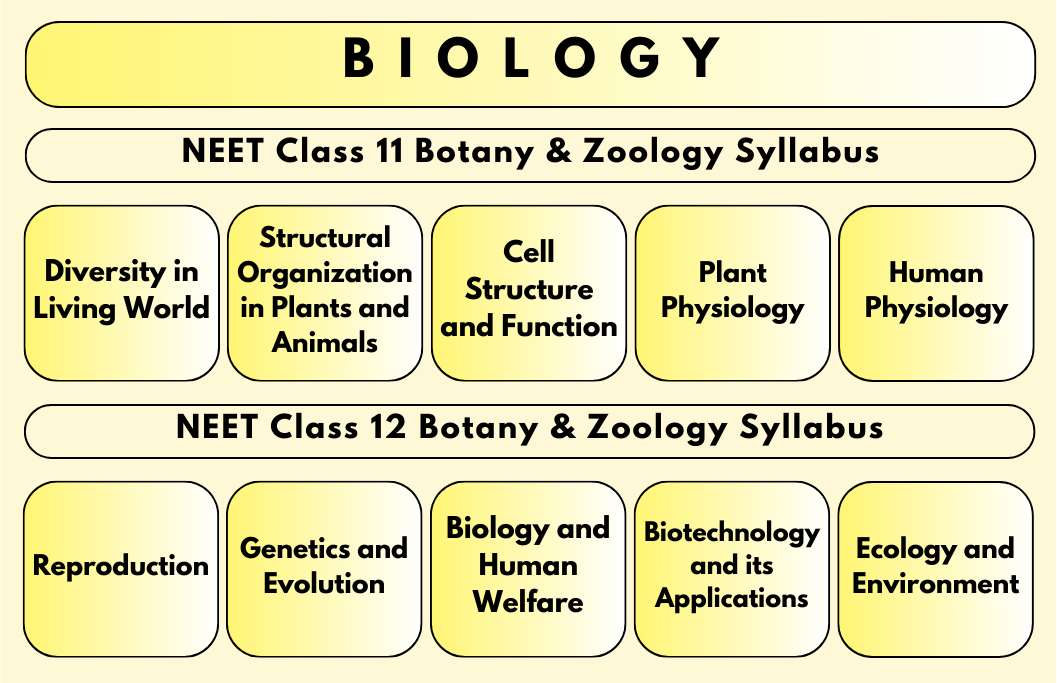NEET 2024 Biology Syllabus for Medical Entrance Examination - Free PDF Download





















FAQs on NEET Biology Syllabus 2024
1. What are the tips to score maximum marks in the NEET Biology exam by referring to NEET 2024 syllabus Biology?
Maximum questions are asked from this subject hence biology is considered the most important component of NEET exams. The most important step that should be taken that helps in the preparation for NEET exams is planning. Students should prepare an effective study plan beforehand and should follow it every day. Also, one wise choice that students can make is to focus mostly on the chapters that contain high weightage. Referring to good books by reputed authors and publications will help the students in scoring good marks as the content available in these books is correct and valid.
2. What are important chapters in the NEET Biology Syllabus 2024?
The most important chapters in the NEET 2024 syllabus Biology section are human physiology, evolution and genetics, and the diversity of living organisms. This information is derived from the weightage of the chapters which is 20%, 18%, and 14%, respectively. Hence, it is advised for the students to focus more on these chapters and get all their doubts cleared in a systematic manner. Vedantu app or website provides you with effectively revised study material which includes reference notes, diagrams, video modules, etc. that will help you ace your exams.
3. Is NEET Biology hard to crack?
As compared to physics and chemistry exams, biology exams are said to be the easiest. As biology mostly contains diagrams and theoretical concepts it is considered to be easy. In order to learn biology effectively, students should always master the general concepts before tackling the specific ones. Diagrams play an important role in clearing the concepts. The diagrams in biology are each vivid and unique. Hence, they are easy to remember.
4. How do students avoid exam-related stress?
Although having a strict and disciplined study plan is essential in cracking NEET exams, it is also necessary to take good care of your mental and physical health. Make sure you give yourself time to relax and freshen up your mind. If you have a disturbed or stressed mind anywhere near the time of the examinations, chances are high that you could end up getting panicked during the exams and will be prone to forget everything that you have studied for the exam. It is also highly recommended for the parents and institutes to not pressurize their children/students during exams.
5. What is more effective to understand the concepts: video modules or books?
While books help you provide proper information about a particular concept, video modules on the other hand provide you with explanations from all the angles which is much more interesting. It also helps you visualise concepts which in turn helps the students in increasing their imagination. Video modules also help in understanding practical concepts like experiments, etc. Video modules also help students in distant learning. Vedantu app or website provides the students with the option of distant learning; to learn and explore concepts from the comfort of their homes!
6. Which biology chapters have more weightage in NEET?
Chapters with higher weightage typically include those covering Human Physiology, Genetics and Evolution, Ecology, and Plant Physiology. However, it's essential to prepare thoroughly for all topics as NEET can be unpredictable.
7. How many chapters are there in Bio NEET 2024?
The number of chapters can vary slightly based on different interpretations of the syllabus. Generally, there are around 21 to 22 chapters covering both Class 11 and Class 12 Biology.
8. What are the new changes in NEET Biology syllabus 2024?
The NEET Biology syllabus for 2024 may include updates or modifications to existing topics, but significant changes are uncommon. It's essential to refer to the latest official NEET syllabus released by the National Medical Commission (NMC) or the National Testing Agency (NTA) for accurate information.
9. Is NEET 2024 syllabus reduced by NMC?
Any reduction in the NEET syllabus would be announced by the National Medical Commission (NMC) or the responsible authorities. As of now, if there are any changes to the syllabus for NEET 2024, it's crucial to refer to official announcements from these bodies for accurate information.




